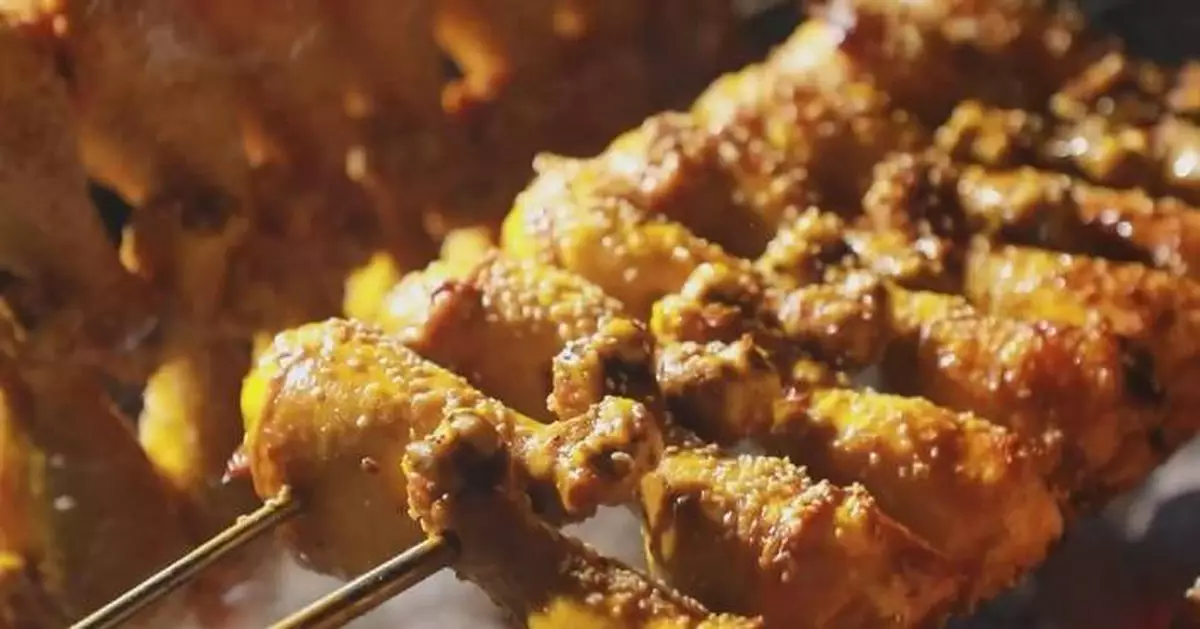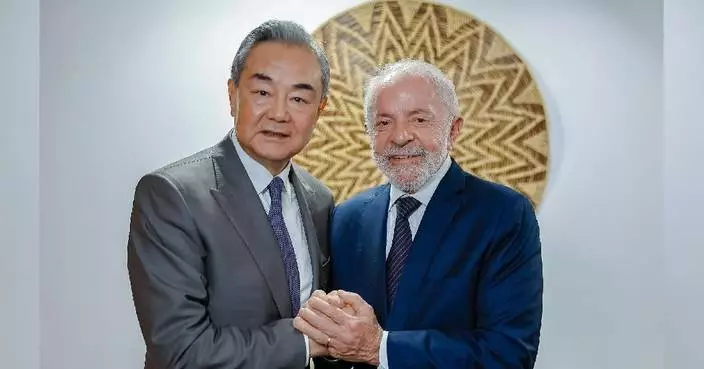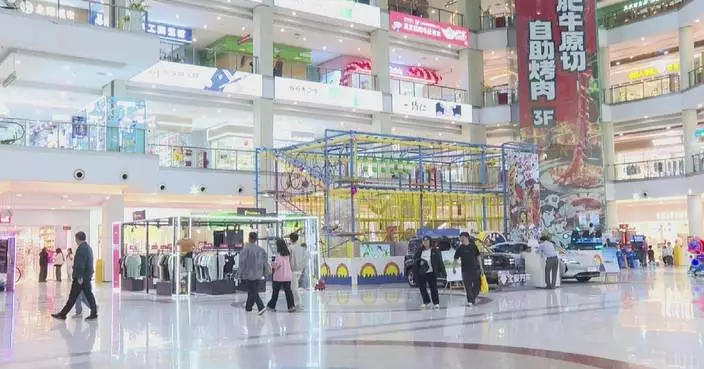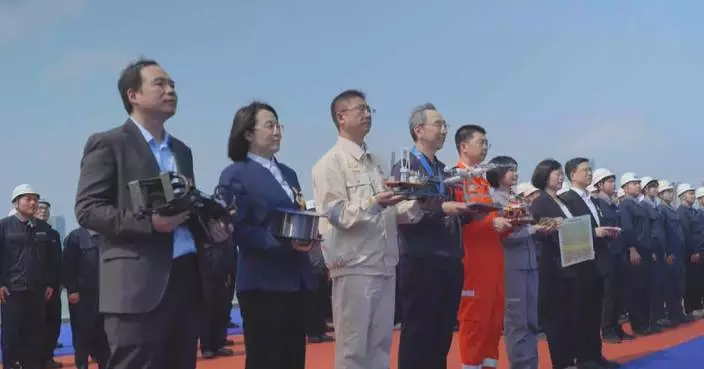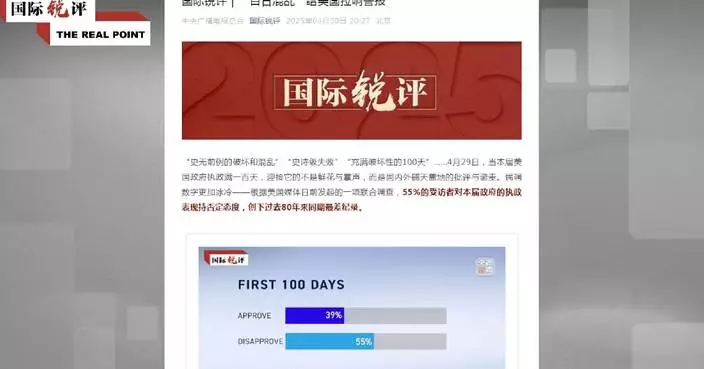The Urumqi Grand Bazaar, the largest marketplace in northwest China's Xinjiang Uyghur Autonomous Region, has become a one-stop destination for sampling the region's best cuisine, drawing large crowds during the recent holiday with its mix of traditional flavors and bold innovations.
During the three-day Qingming Festival holiday, the bustling bazaar in downtown Urumqi became a top destination for both locals and tourists embarking on a culinary journey, attracting nearly 90,000 visitors daily, a 15 percent surge compared to last year.
As dusk slowly settled over the city each night during the holiday, eager diners flocked to the Grand Bazaar's food street for a hearty meal as the aroma of a dazzling array of local delicacies filled the air.
Barbecue often takes center stage in Xinjiang's culinary culture, and the bazaar elevates this tradition to new heights. Beyond the usual lamb skewers and naan bread, vendors roast everything from ostrich eggs to juicy watermelon pieces.
These vendors skillfully roast ostrich, goose, duck, chicken, and pigeon eggs over charcoal flames. Each egg is carefully turned to ensure even cooking, with creative twists such as adding honey or saffron to the yolk.
Innovations extend beyond that. Even staple dishes like baked buns have been reinvented. In addition to the traditional square-shaped lamb-stuffed buns, visitors can now find a new version, the "lamb rib bun," which encases an entire rib inside the dough for maximum meaty satisfaction.
In Xinjiang, a whole roasted lamb is a must when welcoming distinguished guests. At the bazaar's rear courtyard, a large clay oven nearly two meters high and wide can roast up to 10 lambs at a time. The meat is marinated, hung, and slowly roasted for several hours. During holidays, some vendors sell over a dozen whole lambs a day.
There are also Uyghur-style wontons known as "ququ'er", barely larger than a thumbnail. These small dumplings are filled with seasonal wild vegetables, aligning with the springtime tradition of eating foods that reflect nature's renewal.
After sampling the fare, visitors can indulge in one of the bazaar's trendiest drinks -- sand-brewed coffee. Baristas swirl copper pots of coffee concentrate through burning sand until the brew bubbles to perfection. The coffee is served in edible "naan cups," topped with rose petals for an aromatic touch.
The vendors are so confident in the quality of their offerings that the bazaar offers a full refund for unsatisfied customers.
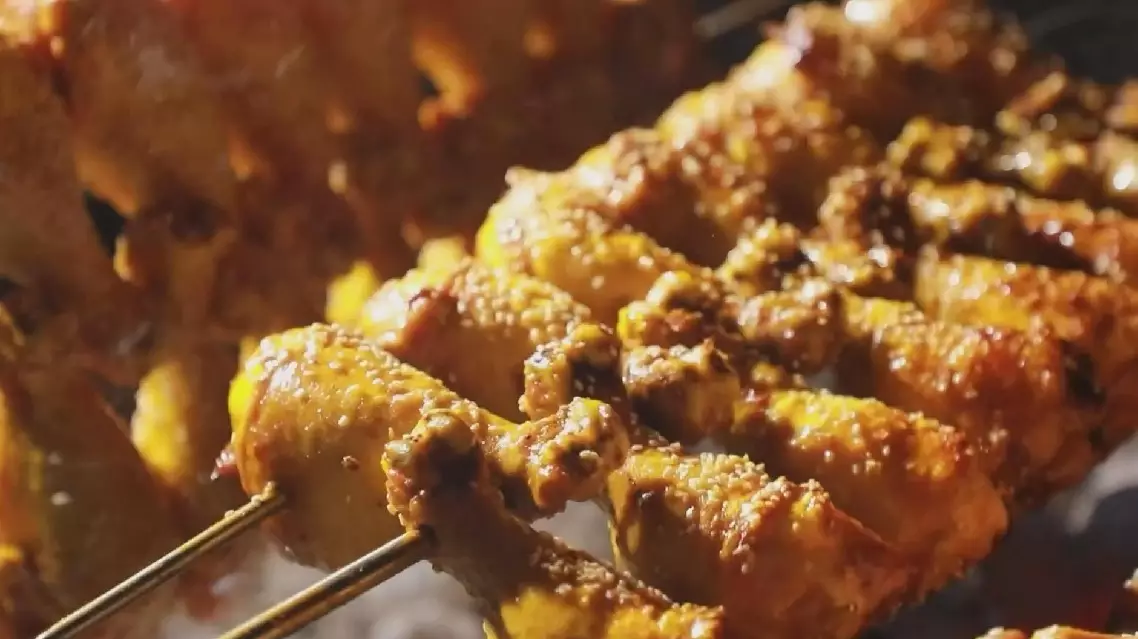
Xinjiang's grand bazaar draws foodies in droves with authentic Uyghur flavors
U.S. tariffs on Cambodia, which were set at 49 percent, have sparked concerns among the Southeast Asian country's key export industries such as garment manufacturing amid the ensuing economic uncertainties.
On April 2, U.S. President Donald Trump announced the 49 percent "reciprocal tariff" on goods imported from Cambodia, the highest among all countries. Days later, the U.S. reduced the so-called "reciprocal tariff" to 10 percent for 90 days, offering a window period to Cambodia for negotiations with it.
Cambodian businesspeople say the tariffs have the potential to wreak havoc on the country's manufacturing sector, which, according to data from the World Bank, makes up around a fifth of the country's GDP.
"For U.S. manufacturers, definitely, there will be a big impact. If manufacturers are focusing on U.S. products, they are now in the middle. They don't know what they should do at the moment because the tariff now from Cambodia to the U.S. is actually quite high," said Dr. Ben Li, a Hong Kong investor in Cambodia and Chairman of the Cambodia Chinese Commerce Association.
Nevertheless, Li sees the tariff hike as an opportunity to export more Cambodian goods to the European Union, where a majority of Cambodian exports enjoy duty-free status.
"I always say there will be a light (at the end of the tunnel.) Even now, the U.S. tariff is so high, it's going to be so high after 90 days, we don't know. But, there's still a big market to Japan or to the European Union. There's still a big opportunity there," he said.
The Cambodian investor also believes the development of major infrastructure projects will help support Cambodia's economy.
"Especially the new canal and then the new airport, and the railways which connect to China. I believe once the logistics and infrastructure are built up, it can help the whole country's economy. By reducing the transportation costs, it can also mitigate the tariff costs," he said.
Cambodia and the U.S. held their first tariff negotiations on April 16, with more expected to follow. Local experts said the stakes are high for the country's workers.
"If this negotiation fails, there will be a significant impact. It will include the garment and travel goods sector. These sectors consist of about 1,068 factories and 930,000 workers. The income generated from these sectors is about 3 billion dollars per year. So it would significantly impact Cambodia's economy, jobs and incomes," said Chey Tech, a socio-economic research and development consultant from Dynamic Alliance Consulting.
Despite the potential risks, Tech expressed his optimism about a positive outcome, citing Cambodian Prime Minister Hun Manat's letter to Trump on April 4.
"The Prime Minister's letter confirmed that Cambodia would reduce the tariff rate for U.S. goods to 5 percent. Second, Cambodia is the least developed country. Third, Cambodia produces goods that the developed countries won't produce. We asked whether the U.S. would be able to produce these low-cost products. It cannot," said Tech.
In 2024, Cambodia exported goods of 9.9 billion dollars to the U.S., making it the country's largest market, accounting for 37 percent of Cambodia's total exports.

49-percent US tariffs sparks worry among Cambodia's key export industries



